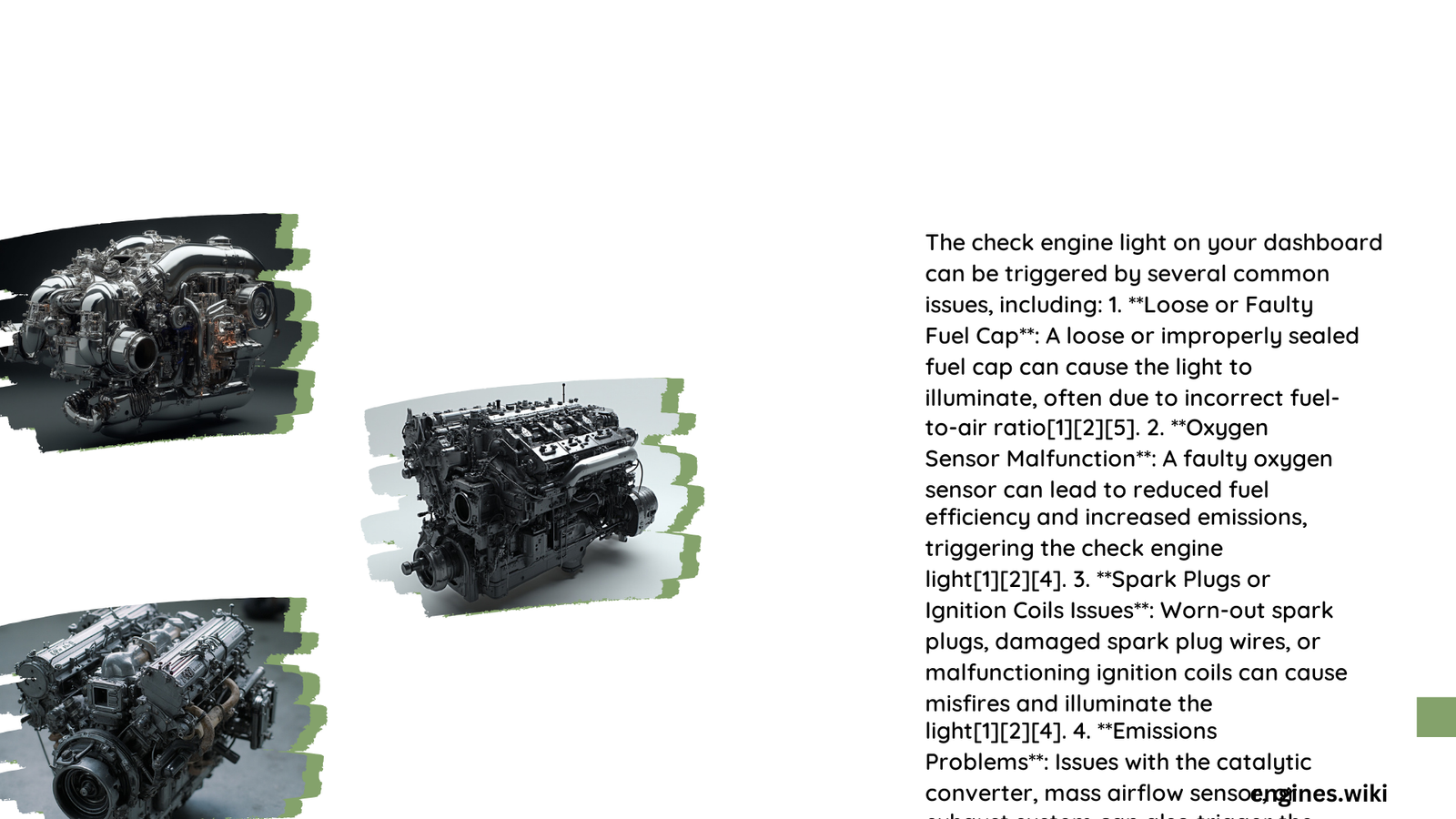The engine light on your dashboard is a crucial indicator of your vehicle’s health. It can signal various issues, from minor problems like a loose gas cap to more serious concerns such as engine misfires or catalytic converter failures. Understanding these causes is essential for maintaining your vehicle’s performance, fuel efficiency, and longevity. This article explores the common triggers of the engine light, their diagnostic codes, and the implications of ignoring this important warning signal.
What Are the Most Common Causes of Engine Light Illumination?
The engine light, also known as the check engine light or malfunction indicator lamp (MIL), can be triggered by numerous factors. Here are some of the most frequent causes:
- Oxygen Sensor Failure
- Loose or Faulty Gas Cap
- Catalytic Converter Issues
- Spark Plug or Ignition Coil Problems
- Mass Air Flow Sensor Malfunction
- EVAP System Leaks
- Vacuum Leaks
Each of these issues can have varying degrees of impact on your vehicle’s performance and may require different levels of attention and repair.
How Do Diagnostic Codes Relate to Engine Light Causes?

Diagnostic trouble codes (DTCs) are essential for identifying the specific cause of an illuminated engine light. Here’s a table showing common causes and their associated DTCs:
| Cause | Diagnostic Codes |
|---|---|
| Oxygen Sensor Failure | P0130 to P0167 |
| Loose Gas Cap | P0440, P0442 |
| Catalytic Converter Issues | P0420, P0430 |
| Spark Plug/Ignition Coil Problems | P0300 to P0312, P0350 to P0362 |
| Mass Air Flow Sensor Failure | P0170 to P0174 |
| EVAP System Malfunctions | P0440, P0442 |
| Vacuum Leaks | P0300 to P0312 |
These codes can be retrieved using an OBD2 scanner, which is a valuable tool for diagnosing engine light issues.
What Steps Should You Take When the Engine Light Comes On?
When your engine light illuminates, follow these steps:
- Don’t panic, but don’t ignore it either.
- Check for any immediate signs of trouble (unusual noises, smoke, loss of power).
- If safe to do so, check your gas cap to ensure it’s tightened properly.
- Use an OBD2 scanner to retrieve the diagnostic code.
- Consult your vehicle’s manual or a professional mechanic to interpret the code.
- Address the issue promptly to prevent potential long-term damage.
Why Is It Important Not to Ignore the Engine Light?
Ignoring the engine light can lead to:
- Decreased fuel efficiency
- Reduced engine performance
- Increased emissions
- Potential for more severe and costly damage
For example, a simple oxygen sensor failure, if left unaddressed, can lead to catalytic converter damage, which is significantly more expensive to repair.
What Are the Potential Costs of Engine Light-Related Repairs?
Repair costs can vary widely depending on the cause of the engine light. Here’s a list of potential costs for common issues:
- Oxygen Sensor Replacement: $50 – $200
- Gas Cap Replacement: $10 – $50
- Catalytic Converter Replacement: $200 – $600
- Spark Plug Replacement: $50 – $200
- Mass Air Flow Sensor Replacement: $50 – $200
It’s important to note that these are estimates, and actual costs may vary based on your vehicle make and model, as well as labor costs in your area.
How Can You Prevent Engine Light Issues?
While not all engine light causes are preventable, you can reduce the likelihood of issues by:
- Following your vehicle’s recommended maintenance schedule
- Using high-quality fuel and oil
- Addressing minor issues promptly before they escalate
- Regularly checking and tightening your gas cap
- Avoiding rough driving habits that can stress engine components
By staying proactive with your vehicle’s maintenance, you can minimize the chances of unexpected engine light illuminations and the potential for costly repairs.
Remember, the engine light on your dashboard is a valuable tool for maintaining your vehicle’s health. By understanding its causes and responding promptly when it illuminates, you can ensure your vehicle remains in optimal condition, providing reliable transportation for years to come.
References:
1. https://caradvise.com/simple-guide-to-the-check-engine-light/
2. https://obdeleven.com/cracking-the-check-engine-light-code-understanding-its-meaning
3. https://cloverdaleautoservice.com/check-engine-codes-and-when-you-should/
